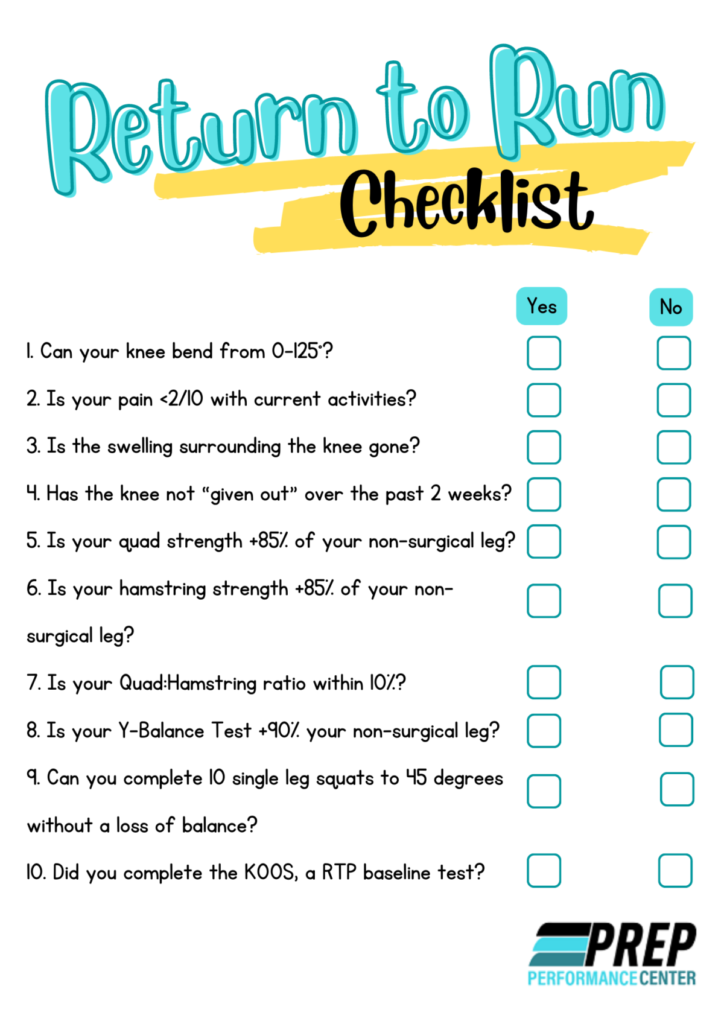You might be wondering when you will be able to return to run after your ACL injury and this is completely normal. There are some things that you should know and it’s important that you pass all of the tests in order to make sure you are ready to return to run and your knee is stable enough. Many ACL protocols suggest 3 months is a good time to begin the Return to Run program. It should be noted that NOT everyone should start their return to run or jog program at 3 months and its equally important to know that everyone will have different goals for their return to jog/run program.
By now your physical therapist should have been taking measurements at least a few times each month to identify strengths and weaknesses as well as any remaining deficits. Some of those measurements include knee flexion and extension, quad strength, hamstring strength, muscle girth, and knee effusion or swelling. If none of these tests have been done, it’s important that you ask your physical therapist to perform a thorough Hands-On assessment to ensure you are properly prepared to begin your running program. Additionally, I believe it is important for you as the patient to understand your current status, and what are your remaining deficits and remaining areas of focus.
Below is a return to run assessment that your Physical Therapist should complete in order to begin your Return to Run protocol. If you meet the below criteria in addition to your physical therapist believes you are ready to run, you can begin your return to run program following a Walk/Jog program, progressing into a Run/Jog program. Some patients may need a more advanced running/Sprinting program in order to return to competitive sports. It’s important to note that throughout this Return to Run Protocol, you should not experience knee pain or swelling that lasts longer than 24 hours, and minimal to no pain should be expected as you continue to progress. Patients who are experiencing pain during the running progression should have a thorough Video Analysis completed in order to optimize running mechanics and reduce the risk of overuse or compensatory injuries.
Please note… Not all Physical Therapists are knowledgeable about all aspects of ACL rehab. There may be another provider within the same clinic that can complete a Running Analysis and or this is something you should seek out a specialized provider for in order to ensure proper training and effective running. You don’t want to go too far down this road developing poor running mechanics that can lead to inefficient running mechanics and risk of overuse injuries.
Answer the following questions:

If you answered NO to any of the questions above, you may not be ready to begin running just yet. Your physical therapist will utilize their clinical judgment, along with quality measures to make this decision. Remember it is NOT a race and timelines should NOT determine clearance to run or return to sporting activities.
If you are looking for more information on Running and how to complete your own Running Analysis, please download our E-Book.
Check out our Running Analysis Checklist and Blog here to learn more about proper running form and how you can identify areas of improvement yourself!
Encourage your running buddies to come back strong – share our helpful checklist with them today.
Download Our FREE Run Checklist
Call today or schedule your individual phone consultation with a Doctor of Physical Therapy. You may also book for an appointment today.


